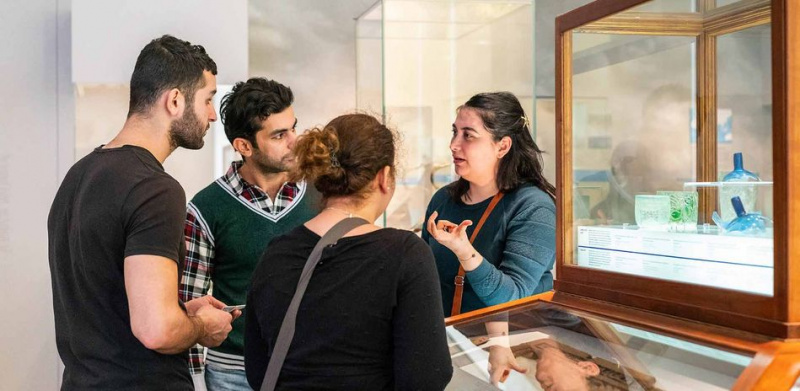UNESCO World Heritage Day
Providing a glimpse behind the scenes of World Heritage, allowing people to experience World Heritage sites and ultimately bringing people together - this is the triple purpose of the UNESCO World Heritage Day.
The UNESCO World Heritage Day was established in 2005 by the German Commission for UNESCO together with German World Heritage Sites Association. Since then, it has been celebrated annually throughout Germany on the first Sunday in June. Many of the 52 German World Heritage sites join in the celebration.
Exploring 52 sites on one day
A total of 52 cultural and natural heritage sites in Germany are UNESCO World Heritage. From the Wadden Sea to Cologne Cathedral, the old beech forests to Augsburg's water management system - together they bring the history of mankind and the wonders of nature to life and awaken interest in their own history. They share an outstanding universal value, that is, their significance not only for national or local communities, but for all of humanity.
On UNESCO World Heritage Day, the 52 World Heritage sites in Germany offer a diverse program that invites visitors to explore and discover their cultural and natural heritage. Guided tours and lectures, music and activities not only raise public awareness of the World Heritage sites as places of particularly careful preservation, but also strengthen their role as communicators of UNESCO's principles.

Explore, experience, experiment
Every World Heritage Site is a place on the fascinating map of our planet's cultural diversity and a learning site for intercultural understanding. Especially for people living in the immediate vicinity of a World Heritage Site, "their” World Heritage Site represents an important point of reference and anchor.
The UNESCO World Heritage Day gives visitors the opportunity to get to know their site even better. The event serves as a forum for communication and encounters with local people. Through exciting special tours, exhibitions or hands-on activities for young people, visitors from near and far spend a day exploring World Heritage sites and gaining insights into what is otherwise hidden.
The numerous activities not only address interested visitors, but especially residents who want to explore and experience "their" World Heritage site in a new way.
Another special target group is children and young people. After all, it is not least due to the commitment of young people that the preservation and sustainable use of World Heritage sites can be guaranteed in the long term. With age-appropriate activities the UNESCO World Heritage Day shall draw interest of young people in monument and nature conservation.
Das Wattenmeer
Background
There are currently 1,199 UNESCO World Heritage sites in 168 countries worldwide. 52 of them are located in Germany. World Heritage Sites are testimonies to past cultures, artistic masterpieces and unique natural landscapes. They share an outstanding universal value, i.e. their significance not only for national or local communities, but for all of humanity.
The basis for World Heritage is the UNESCO World Heritage Convention of 1972 - one of the most successful international protection instruments for natural and cultural heritage worldwide. The World Heritage Convention is based on the principle of international solidarity and cooperation for the protection of cultural and natural sites of outstanding universal value. The protection, conservation and communication of World Heritage are the responsibility of all humanity.
In the spirit of the World Heritage Convention, the communication of World Heritage is just as important as the protection and preservation of the sites. By inscribing their sites on the UNESCO World Heritage List, States Parties and World Heritage Sites commit themselves to pass on knowledge and understanding of humanity's heritage to the young and the old alike. Their task is also to raise society's awareness of the urgency of preservation. The UNESCO World Heritage Day makes a valuable contribution to this.

Völklinger Hütte
The organizers
UNESCO World Heritage Day was launched in 2005 on the initiative of the German Commission for UNESCO and the German World Heritage Sites Association.
The German Commission for UNESCO is Germany's intermediary organization for multilateral policies in education, science, culture and communication. As the UNESCO National Commission, it plays a key role in implementing the World Heritage Convention in Germany. Since 2016, the German Commission for UNESCO has also been the "Information Point World Heritage in Germany" and as such a central mediator between the various actors in the field of World Heritage. The information office is funded by the Federal Foreign Office.
The German World Heritage Sites Association is an association of World Heritage Sites in Germany and the respective tourist organizations. The association - previously active as an advertising association - was founded in September 2001 in Quedlinburg. Its particular goal is promoting a cautious and highly qualified tourism that is fully compatible with monument preservation.

Der UNESCO-Welterbetag in Bamberg